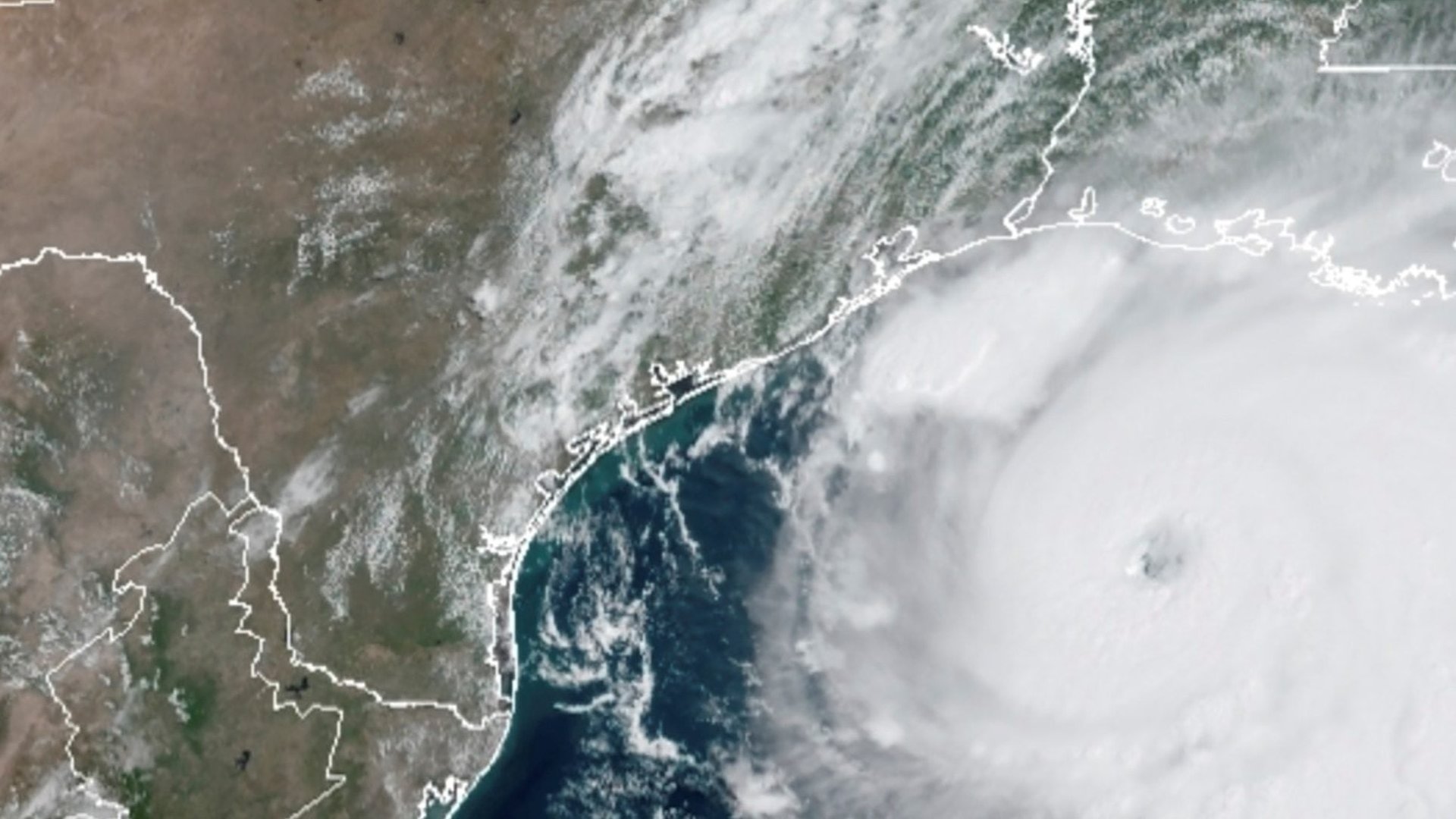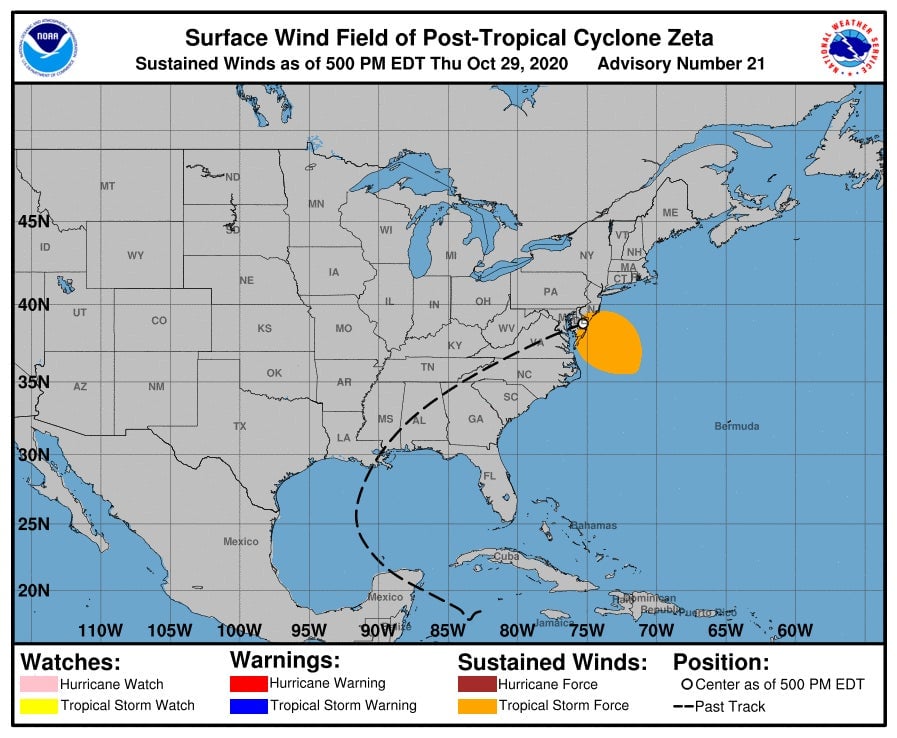New study shows why hurricanes stay so strong after making landfall
Hurricanes’ fury is fueled by warm water. As storms barrel toward the coast, ocean water pumps them full of moisture like a tank filling with gas. This water vapor gives storms the energy to drive far inland, bringing destructive winds and flooding with them.


Hurricanes’ fury is fueled by warm water. As storms barrel toward the coast, ocean water pumps them full of moisture like a tank filling with gas. This water vapor gives storms the energy to drive far inland, bringing destructive winds and flooding with them.
Usually, Atlantic hurricanes lose about 75% of their energy within a day after making landfall, the period when storms inflict most of their damage. But warmer waters from climate change mean hurricanes are now only losing about half their strength within 24 hours after passing over land, according to a study published on Nov. 11 in the journal Nature.
Such storms can travel about 270 miles inland in a day, putting them within striking distance of more than 60 million people now living along the Atlantic and Gulf coasts. And that portends even more costly weather-related disasters: The National Oceanic and Atmospheric Administration reports the US has already suffered more than $50 billion in damages from weather and climate disaster events this year.
To understand how warmer temperatures are changing hurricane intensity, researchers based at the Okinawa Institute of Science and Technology Graduate University analyzed wind speeds in 50 Atlantic hurricanes that made landfall between 1967 to 2018. As the hurricanes pass over land, they analyzed how long they maintained their full strength, a function of wind velocity. Using computer simulations, they showed hurricanes’ extra moisture allowed them to travel deeper inland with more force than in the past.
The new findings may explain a paradox. Hurricanes’ frequency and intensity have remained the same over the last century, even as inflation-adjusted damages have soared. A growing population is one reason. But the hurricanes’ slowing decay after reaching land helps explain the discrepancy, too.
“Unparalleled” warming has already been observed in the Atlantic ocean in recent decades, report scientists in the Proceedings of the National Academy of Sciences. Sea surface temperatures are now higher than any time in the last 3,000 years and are projected to rise between up to 0.9° F per decade over the coming century. For each degree of warming, says Michael Mann, a climate scientist at Pennsylvania State University, the strongest storms (category or 5) will see the maximum potential intensity rise by 7%.
Peter Sousounis, director of climate change research at AIR Worldwide, cautioned it was still early to make definitive claims about how climate change has affected hurricanes. Temperature and precipitation already are clearly affected by increasing global temperatures. But isolating the forces that drive relatively rare, severe events such as hurricanes remains difficult. Confounding variables, such as a multi-decadal warming cycle in the Atlantic and normal climate variability, make it hard to draw conclusions.
AIR Worldwide builds “catastrophe models” for insurers to gauge risk, and so far, Sousounis says, any increased wind damage attributable climate change is hard to isolate.
But US insurance companies are already anticipating this new weather future. “We are planning on it,” wrote Sean Harper by email. He is the founder of Kin Insurance, which specializes in insuring coastal homeowners impacted by climate change in states such as Alabama, Georgia, Texas, and Florida. “What used to be the norm if you lived within one mile of the coast will now be the norm within five miles of the coast,” says Harper.
He pointed to a record 11 named storms making landfall in the mainland US in 2020, two more than the prior record set in 1916. One of them, Hurricane Zeta, traveled thousands of miles, traversing a third of the US last month. Days later, Hurricane Eta, a Category 4 hurricane, turned into a huge tropical storm after landfall, dumping torrential rains across Central America and killing at least 57.

AXA, an insurer with more than 100 million clients, says it has not yet seen a major departure from the historical intensity and frequency of hurricanes globally. But it’s preparing to see an upswing as warming increases.
“There’s a strong uptick in interest and concern” among insurers, says Sousounis. “They want to be financially prepared.” AIR is fielding requests for climate risk modeling scenarios that extend through 2050, and sometimes as far out as 2090. A review of the scientific literature suggests that the share and perhaps even the frequency of intense, damaging storms is likely to grow.
That would be consistent with this year, which has been the stormiest on record: 28 named storms in the Atlantic, a dozen of which have struck the US coast. “The industry is definitely going to change,” said Sousounis.
Correction: A previous chart included damage estimates for all natural disasters. The new chart shows cumulative damage estimates for each decade between 1980 and 2020 from severe storms, tropical cyclones, and flooding.